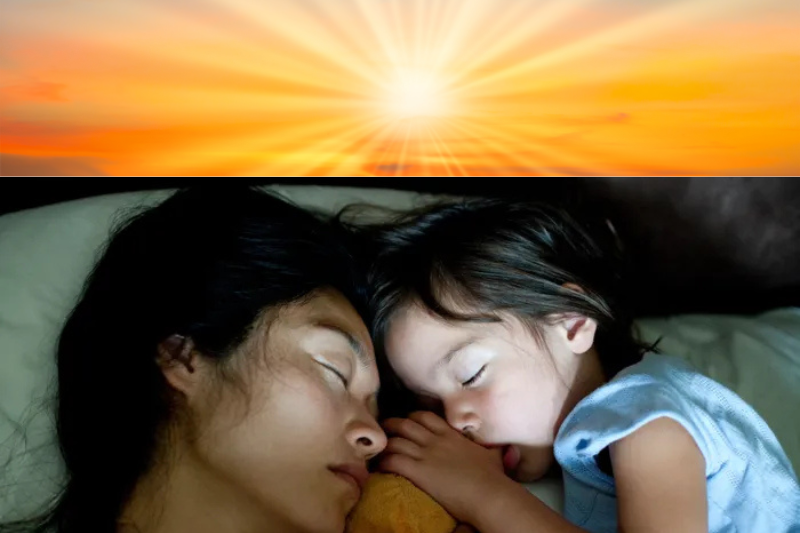Intro
Sharing a bed or bedroom with one’s child, termed co-sleeping, provokes much debate among experts in children’s development and well-being. While it’s embraced as standard in some cultures, others see potential issues. The psychological effects are intricate, shaped by community values, family dynamics, and each person. This article explores benefits and drawbacks, what influences outcomes, and offers balanced guidance for families.
Understanding Co-Sleeping Types
Before weighing impacts, key to grasp forms co-sleeping may take. It can involve:
Bed-sharing – Child and caretaker sleep side by side.
Room-sharing – Child sleeps independently yet near enough to caretaker.
Proximal rest – Any plan putting child close such that caretaker responds promptly.
Cultural norms greatly affect views on co-sleeping. In numerous Asian, African and Latin American societies, it’s regarded typical and healthful, whereas Western places like the U.S. and parts of Europe emphasize separating early and independence.
Positive Psychological Aspects
Enhanced Sense of Safety
Kids who co-sleep with caretakers often build strong reassurance. Being near physically can soothe worries, particularly as babes start to separate yet depend entirely on guardians. Quick solace from the trusted person may cultivate a secure bond, the psychological idea of confidence in caretakers’ availability and nurturing.
Co-sleeping Benefits Emotional Learning and Attachment Bonds
When parents promptly respond during nighttime awakenings, children glean skills for managing feelings. Through modeled composure, kids better handle emotions, potentially lowering later anxiety.
Close physical contact deepens the tie between parent and child. Moments of gentle interaction, like embrace or soothing touch, cultivate emotional closeness. This strengthened bond may safeguard against psychological issues by fostering resilience and well-being from youth to teenage years.
Some infants sleep soundly feeling secure near parents. Less frequent waking up and swifter reassurance improve temperament, focus, and daylight conduct.
However, extended cohabitation could stall autonomy development. Sleep offers the first self-soothing practice area and independence attempt. Prolonged co-sleeping past babyhood might delay an child’s comfort-seeking and alone-time coping capacities.
While co-sleeping initially soothes nighttime fright, it paradoxically increases reliance on a parent’s presence for reassurance. This dependency could exacerbate separation stress in parent-less contexts like school or socializing.
Disturbed Parental Sleep and Relationship Strain
While sharing sleeping quarters with their offspring often results in broken nights for parents, leading to irritability, worry, and even depression, permitting children into the parental bed can also constrict opportunities for intimacy between partners, potentially causing friction in the relationship. Furthermore, a home environment filled with tension and stress can negatively impact a young one’s sense of security.
Varied Associations for Slumber
Kiddos who learn to nod off solely beside a guardian may battle slumber when the caretaker is elsewhere. This can generate long-lasting connections between sleep and place, constructing bedtime rituals more demanding and adding to disorders of repose.
Factors Color Psychological Outcomes
The brain effects of co-sleeping aren’t uniform. Numerous elements decide whether the expertise is positive or detrimental:
Nature of the Youngster
Certain babes are naturally more anxious or sensitive and could benefit extra from shared sleeping quarters. Others may thrive with early autonomy. Understanding an infant’s temperament is crucial in deciding resting stations.
Parenting Design
Guardians who practice responsive, warm, and structured rearing during daylight can alleviate a number of the potential unfavorable influences of co-sleeping. On the other hand, inconsistent or too lenient child-rearing may magnify reliance issues.
Cultural Background
In cultures where shared sleeping is standard, kids don’t essentially display the mental outcomes related to the routine in Western analyses. Cultural context shapes expectations and social norms around liberty and feelings development.
Length of Co-Sleeping
Co-sleeping that lingers into middle childhood (following ages 5-6) may be more apt to have harmful impacts on freedom and unease than co-sleeping restricted to babyhood and toddlerhood.
Long-Term Brain Effects
Explorations into the long-term brain influences of co-sleeping are blended:
Positive Outcomes: Some longitudinal research suggests people who shared sleeping spaces as children frequently exhibit elevated self-esteem, comfort with physical closeness, and reduced psychiatric issues later in life.
However, other studies indicate extended reliance and unease may be more prevalent among those who slept together consistently without gradual adjustments to solo rest.
It is vital to note causation is difficult to ascertain. Preexisting traits in the child or family (like basic anxiousness) could impact both opting to sleep near each other and subsequent psychological effects.
Clinical Views and Recommendations
From a professional perspective, the American Academy of Pediatrics (AAP) advises infants stay in the same room without sharing a surface for a minimum of 6-12 months to decrease risk of Sudden Infant Death Syndrome (SIDS). Beyond infancy, no single “accurate” solution exists for sleeping places. Experts regularly counsel parents to consider their child’s needs, dynamics within the family, and cultural context.
If sleeping jointly causes distress for either the child or parents, or appears to hinder appropriate developmental steps, transitioning to independent sleep using step-by-step, supportive strategies may be beneficial.
Techniques for Healthy Shared Sleeping
If families decide to sleep together, certain practices can aid psychological well-being:
Set Clear Confines
Even when sleeping near each other, establishing nightly routines and limits can promote a sense of order and foreseeability.
Gradual Changes
When moving from shared sleeping to solo sleep, step-by-step changes—such as initially staying in the same room, then separating rooms—can ease anxiety.
Responsive Caregiving
Keeping consistent, reactive care during the day reinforces the child’s overall emotional security, enabling feelings of safety even when physically apart from parents.
Prioritize Parental Needs
Parents too must attend their own rest and bond requirements. Resourceful answers, such as erecting an additional sleeping pad for the child in the mother and father’s quarters, can balance intimacy with private area.
Conclusion
The brainy impacts of children dozing with guardians are multifaceted and significantly individualized. While co-sleeping can advance enthusiastic security, reinforce ties, and advance better rest in some instances, it might also jeopardize delaying freedom and making reliance issues in others. The end result relies generally on the child’s temperament, the guardians’ responsiveness, the social setting, and the way and length of co-sleeping.
In conclusion, the choice with respect to rest plans ought to depend on what capacities best for the singular child and family. Open communication, flexibility, and attentiveness to the child’s emotional needs are key. Whether co-sleeping or independent sleeping is chosen, a nurturing, supportive home environment remains the most critical factor for healthy psychological development.



